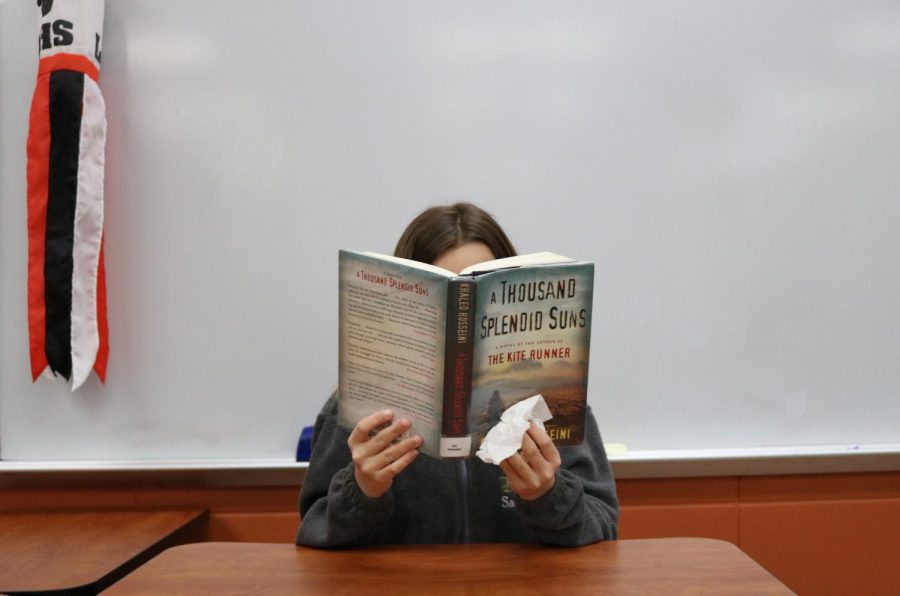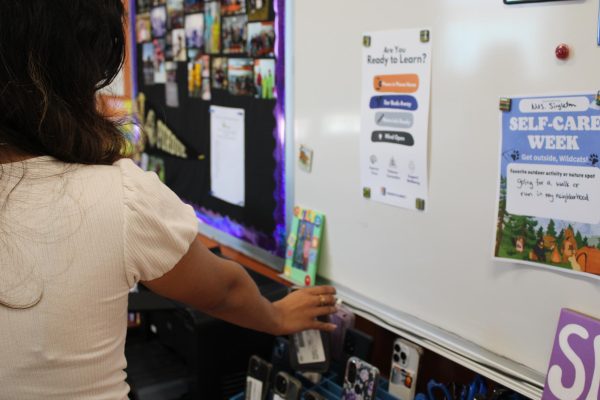Why So Upsetting?
Students are often required to read sad books or watch sad movies in attempt to broaden their understanding of others. For example, A Thousand Splendid Suns is read in most sophomore English classes and leaves some students sad but also aware of those people’s hardships.
Throughout high school, plenty of teachers have their students either read a book or watch a movie that might make them emotional. Sure, this could mean that the student is invested in the story, but why do these books or movies have to deal with such sad themes?
Books like “One Thousand Splendid Suns” and “Beloved,” and movies like “Life is Beautiful,” are some of the upsetting stories a student may read or watch for a class. While one might wonder why these are taught, teachers have reasons to be introducing these stories to their students, and students have their own thoughts as to why as well.
Teachers’ thoughts
Mrs. Kristen Hawver, an English teacher who instructs honors-level world literature for sophomores and American Studies, has her sophomore students read “A Thousand Splendid Suns,” and then she shows the movie “Life is Beautiful.”
“[‘A Thousand Splendid Suns’] is a great story the kids could get into it, and it brings up a lot of issues and topics that I don’t think a lot of kids in Libertyville would be aware of,” Mrs. Hawver stated.
She knew that her students did not have to worry about being treated like property, the way Mariam does in “A Thousand Splendid Suns.” She said she wanted to implement a story that showed how some people are treated in other countries.
With “Life is Beautiful,” Mrs. Hawver stated that “this is a great film to pair with this novel,” simply because “providing new perspectives to students is [her] ultimate goal.”
The film takes place during the Holocaust and for most of the film, the main characters are in concentration camps. Both of these stories have difficult themes, as Mrs. Hawver mentioned, but she feels it is important to have students realize what other people have gone through.
Mr. Greg Pedersen, another English teacher, has been teaching “Beloved” for 15 years. In one of the first scenes in the book, the reader learns that Sethe, a runaway slave, killed her 2-year-old daughter in order to keep her from slavery.
Regarding the reactions of his students, Mr. Pedersen explained that their “initial shock” eventually “spawns off an ethical discussion.” And, according to Mr. Pedersen, his students typically decide that they cannot judge the fact that Sethe killed her daughter, and almost killed her other three kids, as none of us have ever had to deal with slavery.
Students’ Thoughts
Jodie Chen, a sophomore, just finished reading “A Thousand Splendid Suns” in her literature class. She said she spent a lot of her time reading the book crying because of how emotional it made her. She had a difficult time whenever Rasheed, one of the book’s primary antagonists, was in a scene, and she had to use many tissues to get her through the story.
One way Chen handled the different topics of the story was through humor. She would write a few funny annotations while reading to get her through the harder parts of the story. Chen, who agrees with teaching these stories, feels that teachers teach these kinds of books to “show you a different side of a conflict that we all know about,” which is very similar to Mrs. Hawver’s point of view.
Annika Larson, a senior, read “Beloved” earlier this year in AP Literature.
“Most of the book was difficult for me to read; the depictions of slavery were very graphic,” Larson stated.
However, she also “thinks it’s important for students at a high school like Libertyville to be taught a book like ‘Beloved.’ The book “really helped [Larson] see how terrible slavery really was, even when the masters were taught to be ‘nice’ slave owners.” Larson believes that reading “Beloved” might “burst the Libertyville bubble a little bit because most people [here] have a lot of privilege.”
Both Chen and Larson recommend that people read these two stories. Chen simply stated that “it’s just such a good story.” However, Larson stated that “Beloved” “grabbed her attention, and [she] actually read the whole thing.” She also said that she “learned a lot of what slavery really was, and [she now has] more of an open mind.”
Emma Soderstrom, a senior who watched “Life is Beautiful” in her sophomore literature class two years ago, said there were several difficult parts for her throughout the movie. She said she handled them by simply “letting [herself] feel the emotions.” She did not “externally show the emotions,” but instead kept them internal.
During the movie, Guido, the main character, struggles with keeping his son hidden from the Nazis running the camp they’re in and keeps up his son’s spirits by pretending that they’re playing a game. He keeps a positive attitude even though he doesn’t know if they will ever make it out of the camp.
Soderstrom believes watching movies like this “teaches students to persevere through challenges with a positive attitude, even when there seems to be no light at the end of the tunnel.”









